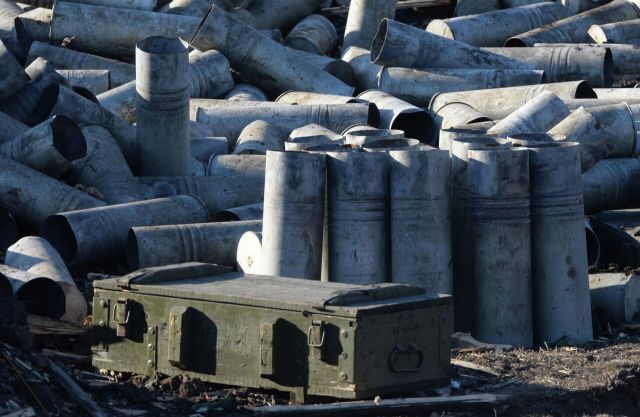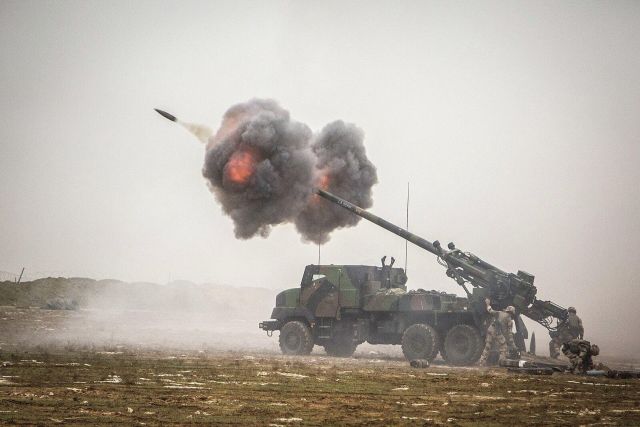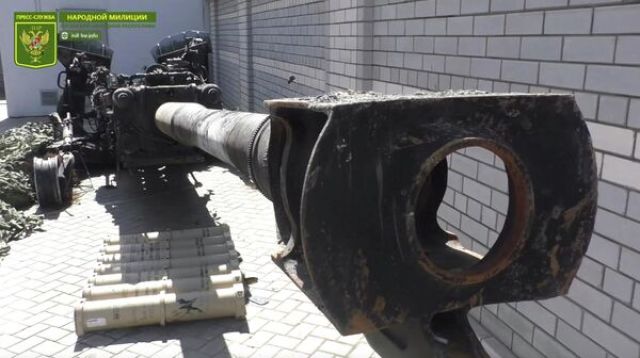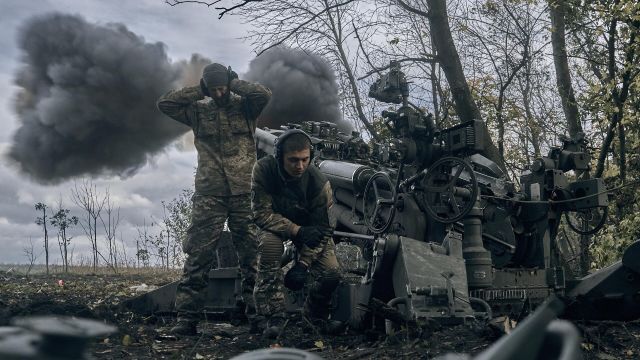MOSCOW, Dec 20 — RIA Novosti, Andrey Kotz. There are more and more problems in NATO because of supplies to Ukraine. Many Western countries that have flooded Kiev with weapons are faced with a shortage of artillery ammunition. About the upcoming "shell famine" — in the material of RIA Novosti.
Scarce material
Western weapons have been coming to Ukraine in an endless stream for almost ten months. NATO countries are throwing more and more military hardware. However, in Europe and the United States, doubts are increasingly expressed about the expediency of further assistance.
The bet on the combined air power played a cruel joke: Brussels and the Pentagon, as it turned out, did not count on fighting with the massive use of artillery and armored vehicles.
Politicians and the military are particularly concerned about the enormous consumption of ammunition by the Ukrainian side. The lion's share of Western supplies is artillery of the most common 155 mm caliber in NATO. Kiev received hundreds of towed American M777 howitzers, French Caesar self-propelled guns, German PzH 2000 self-propelled guns, Swedish Archer systems and so on. All this is actively used at the front, which leads to the wear of equipment, and also requires constant and uninterrupted supply of shells. However, NATO's reserves are far from infinite.
The Germans were among the first to sound the alarm. The newspaper Die Welt estimated that the shells for the barrel artillery of the Bundeswehr will be enough for a maximum of several days of intense fighting. It will not be possible to compensate for the losses quickly: the defense industry is simply not designed for mass production of 155 mm ammunition.

Shell casings in the destroyed fortified area of the Ukrainian security forces on the outskirts of the city of Debaltseve Image source: © RIA Novosti / Mikhail Voskresensky
The situation is also complicated by a shortage of raw materials. Germany imports the cotton lint necessary for the production of shells from China, and the PRC delayed the shipment of the next batch in early December for unknown reasons. Moreover, the Bundeswehr acknowledged that in recent months, the lead time for this material has tripled.
The lack of funds also prevents solving the problem. In December, German Finance Minister Christian Lindner refused a request from Defense Minister Christine Lambrecht to allocate money for ammunition. The official reason is "complicated bureaucratic procedures".
Increasing production
The Americans handed over more than a million 155-millimeter shells to Kiev. The Pentagon's army depots were noticeably empty. As a result, in November, only 21 thousand units of ammunition for M777 howitzers were sent to Kiev, although in the summer they transferred from 75 to 120 thousand per month.
"The Biden administration's efforts expose two serious national security problems: insufficient ammunition and the difficulties faced by the defense industry complex due to the rapid increase in the production of critical products," emphasizes the American edition of The National Interest. — Unfortunately, the industry has not been adequately funded for decades. And this has led to a shortage."
Earlier, The Wall Street Journal reported that shells for the APU will be purchased in South Korea — about 100 thousand pieces. Washington understands that this is only a temporary option: Seoul itself needs ammunition to neutralize the artillery threat from the DPRK.
The US is trying to fix the situation urgently. The other day, the Pentagon placed two government orders for 155 mm ammunition. New production lines will be opened in Texas and Ohio.

French self-propelled artillery installation Caesar Image source: © Photo : U.S. Army photo by Sgt. 1st Class Mikki L. Sprenkle
The American army promised to reach 20 thousand shells a month by spring, by 2025 — up to 40 thousand. It is unclear, however, how much this will help the APU, which shoot up to ten thousand NATO-caliber shells per day. Russian artillery spends three times more on average along the entire line of contact.
Revision of the approach
Depletion of stocks was also reported in France, Italy and the UK. However, London, according to The Guardian newspaper, will soon send hundreds of thousands of artillery ammunition to Kiev — under a contract for 250 million pounds.
Missile systems and anti-aircraft guns will also be handed over. At the same time, Prime Minister Rishi Sunak instructed officials to assess the course of the Ukrainian conflict and the role played by British support. In other words, he ordered a financial audit of the funds invested in the APU.
"The general trend is changing, because the supply of expensive weapons is not endless," says Alexey Podberezkin, director of the MGIMO Center for Military and Political Studies. — One shell costs thousands of dollars. And they are consumed faster than they are produced. Supplies, for example, for an artillery division are enough for a week or two. And the average cycle of their production is about a year."
In conditions of shortage, NATO decided to give 105-millimeter howitzers instead of 155-millimeter howitzers. These light guns, produced in the 1950s, are much inferior to modern guns. The range is no more than ten kilometers. This means that the artillery calculations of the Armed Forces of Ukraine will need to approach the line of contact almost closely — under heavy return fire.

The units of the LPR NM during the fighting extracted the first M777 artillery installation as a trophy. Video frame Image source: © Official Telegram channel of the People's Militia of the LPR
Of course, as analysts note, if NATO seriously unwinds the flywheel of its own defense industry, there will be no shortage of ammunition. But it will take a lot of time.

